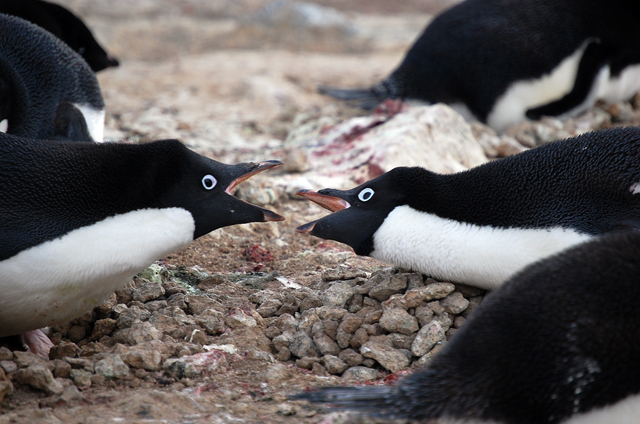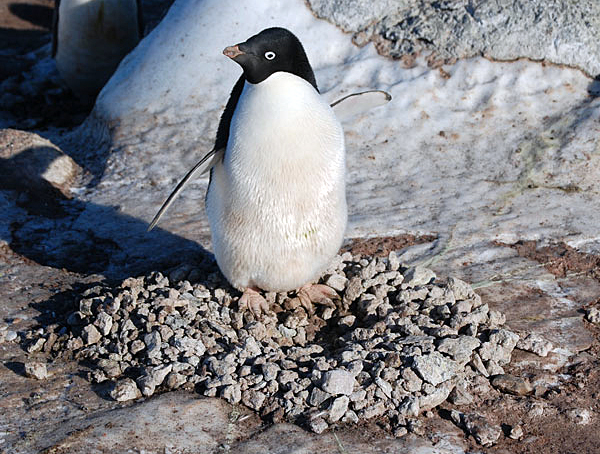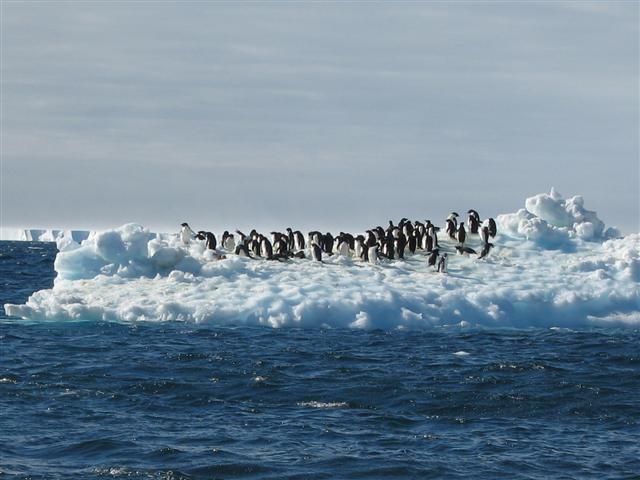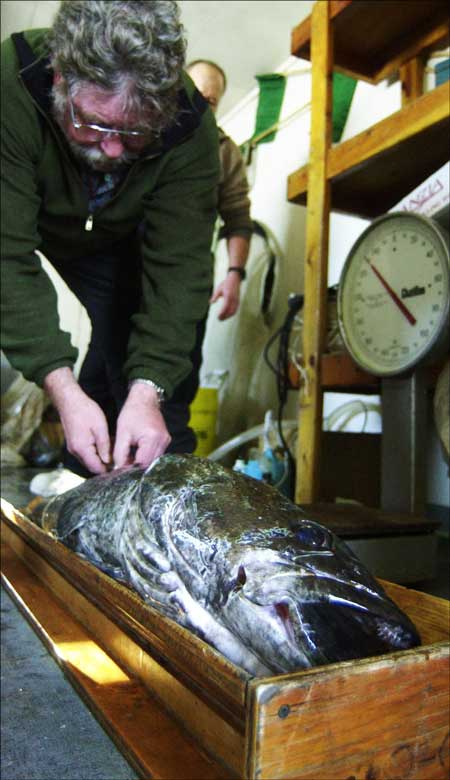
Fragment of a jaw bone of a ceratopsian dinosaur, Archaeoceratops, from the Lower Cretaceous (Gansu province, China). (Credit: Copyright Romain Amiot)
Chilly Times for Chinese Dinosaurs: Abundance of Feathered Dinosaurs During Temperate Climate With Harsh Winters
ScienceDaily (Mar. 13, 2011) — Dinosaurs did not always enjoy mild climates. New findings show that during part of the Early Cretaceous, north-east China had a temperate climate with harsh winters. They explain the abundance of feathered dinosaurs in fossil deposits of that period.
Their work is published in the Proceedings of the National Academy of Sciences.
It has long been thought that the climate of the Mesozoic, the age of the dinosaurs, was generally warm across the planet. However, a recent study challenges this theory. The work focuses on a region of north-east China where the Jehol fauna developed during part of the Early Cretaceous (between 125 and 110 million years ago). The fossils found in this deposit include many dinosaurs covered with filamentous structures similar to bird feathers (such structures can take on various forms, ranging from filaments, down and 'protofeathers' to true feathers). But is this feature due simply to excellent conditions of preservation or to the adaptation of such species to environmental conditions? Since these dinosaurs were unable to fly, several scientists have suggested that their feathers acted as thermal insulation.
A team of paleontologists from France, China, Japan and Thailand examined the issue and tried to determine the temperatures at that time. Teeth and bones from dinosaurs, mammalian reptiles, crocodiles, turtles and freshwater fish from fossil deposits containing the Jehol fauna were collected. This selection of samples was then completed by fossil remains from contemporary deposits in other regions of China, Japan and Thailand. The scientists analyzed the oxygen isotopic composition of each sample. They based their analysis on the principle that the average local air temperature determines the relative quantity of oxygen isotopes contained in the rainwater drunk by the animals. This isotope record is passed on and stored within the bones and teeth of animals as they grow. Since the oxygen contained in the mineralized tissue is preserved during fossilization, the researchers were able to reconstruct the prevailing air temperatures in the environment of Asian dinosaurs during the Early Cretaceous.
The results show that average temperatures in this period of the Early Cretaceous were very similar to those of today at equivalent latitudes (such as the climate in Beijing today). The Jehol fauna therefore lived in a cool temperate climate characterized by harsh winters during which cold-blooded reptiles (turtles and lizards) had to hibernate, whereas the down, feathers and fur of warm-blooded animals (mammals, birds and dinosaurs) enabled them to maintain sustained activity in winter. "These results do not prove in any way that feathers appeared because of their insulating characteristics. They show that feathers would have given the dinosaurs of the Jehol fauna a physiological advantage over their fellow animals with scales," points out Amiot, lead author of the paper and currently a CNRS researcher at the Laboratoire de géologie de Lyon (ENS de Lyon/Université de Lyon 1/CNRS).
This work helps us to better understand the Early Cretaceous period, of which there are few geological records, and sheds new light on existing theories about Earth at the time of the dinosaurs.
The laboratories involved are: Laboratoire de géologie de Lyon: terre, planètes et environnement (CNRS/Université Lyon 1/ENS de Lyon); Laboratoire de géologie de l'École normale supérieure (CNRS/ENS Paris); Institut de physique du globe de Paris (CNRS/UPMC/Université Paris Diderot); and the Institute of Vertebrate Paleontology and Paleoanthropology , Beijing, China.
Story Source:
The above story is reprinted (with editorial adaptations by ScienceDaily staff) from materials provided by CNRS (Délégation Paris Michel-Ange).
Journal Reference:
- R. Amiot, X. Wang, Z. Zhou, X. Wang, E. Buffetaut, C. Lecuyer, Z. Ding, F. Fluteau, T. Hibino, N. Kusuhashi, J. Mo, V. Suteethorn, Y. Wang, X. Xu, F. Zhang. Oxygen isotopes of East Asian dinosaurs reveal exceptionally cold Early Cretaceous climates. Proceedings of the National Academy of Sciences, 2011; DOI: 10.1073/pnas.1011369108
CNRS (Délégation Paris Michel-Ange). "Chilly times for Chinese dinosaurs: Abundance of feathered dinosaurs during temperate climate with harsh winters." ScienceDaily 13 March 2011. 14 March 2011 <http://www.sciencedaily.com /releases/2011/03/110311173104.htm>.























